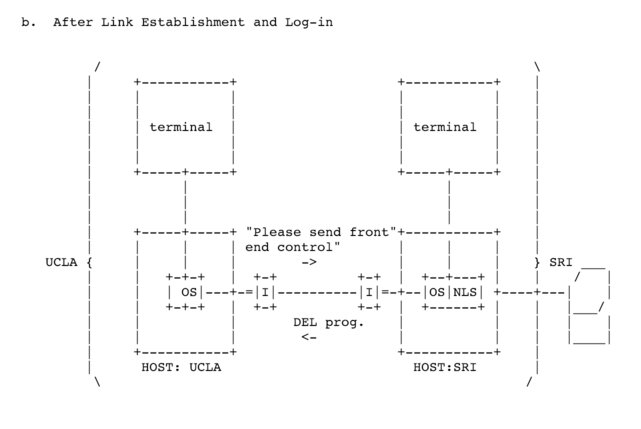Yesterday, for some reason, I realized I had never read RFC 1. I was thinking about a small detail regarding Kubernetes service ports and the HTTP protocol when a thought hit me: I’ve never read the very first RFC.
Why not? More importantly, what does RFC 1 even discuss? I had the power to find out, so that’s exactly what I did.
RFC 1 was written by Steve Crocker on April 7, 1969. It’s an eleven-page document outlining a basic protocol for establishing bidirectional communication between two remote machines.
It was a simple read, but it revealed the meaning behind concepts I’ve been
using for over two decades: TTY and echo.
TTY stands for Teletype — a more advanced typewriter that could send and receive
messages over a wire.
Echo is an interesting one. Back then, the only way to
acknowledge receipt of a message was to send it back to the origin in the exact
same order, like an echo.
One concept I wasn’t familiar with is the Display Editing Language (DEL). This idea, which later evolved into the Decode-Encode Language described in RFC 5, was a clever solution to a limitation of TTYs at the time. TTYs processed input character by character, which could hurt performance. As explained in the RFC:
If the user types H E L L O <- <- P , where <- is rubout and is carriage-return, he has made nine keystrokes. If each of these keystrokes causes a message to be sent, which in turn invokes instructions on our display station, we will quickly become bored.
It was a 30-minute read, but I walked away with a new understanding of tools I use every day. I’ve also left you some videos about teletypes and how they work.
